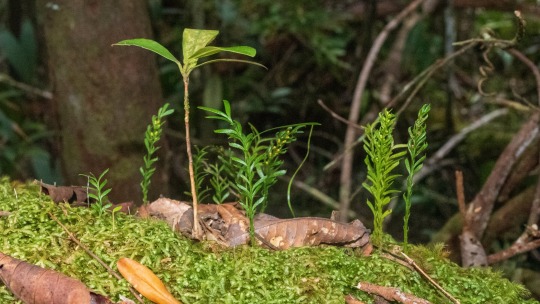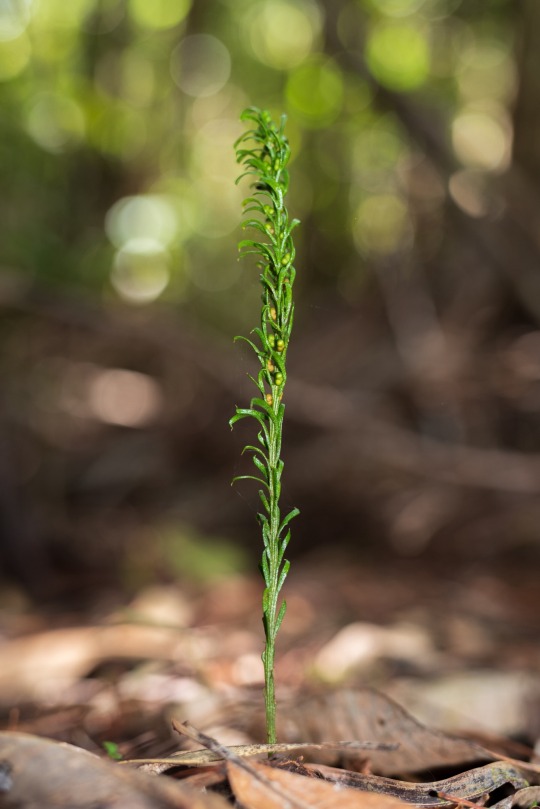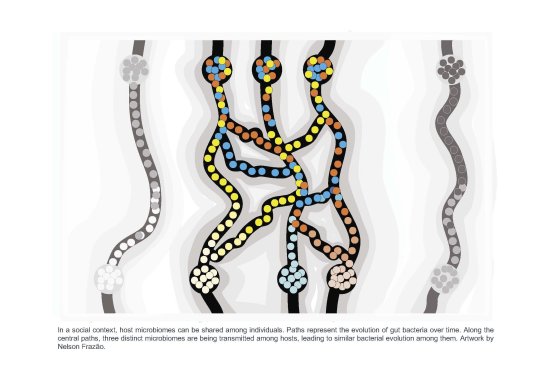#phys.org
Explore tagged Tumblr posts
Text
6 notes
·
View notes
Text

Hundreds of ancient earthworks built in the Amazon Modern deforestation has allowed the discovery of more than 450 of these large geometrical geoglyphs. (Hi-Res).
#geoglyph#geoglyphs#earthworks#ancient#ancient earthworks#ancient people#land art#amazon#forest#forests#rainforest#rainforests#amazon rainforest#jenny watling#environment#earth science#agroforestry#archaeology#pre columbian#brazil#nature#phys.org#article#articles
3 notes
·
View notes
Text
3 notes
·
View notes
Text


PHYS.ORG

Janus-like metasurface technology shows different optical responses according to the direction of light
0 notes
Text
0 notes
Text
This Tiny Fern Has The Largest Genome Of Any Organism On Earth
— By Royal Botanic Gardens, Kew | May 31, 2024

The fern species Tmesipteris oblanceolata from New Caledonia was found to have more than 50 times more DNA in each cell than humans. According to new research, its genome size is 160.45 gigabase pairs. Credit: Pol Fernandez
In a new study published in the journal iScience, researchers from the Royal Botanic Gardens, Kew and the Institut Botànic de Barcelona (IBB-CSIC) in Spain present a new record-holder for the largest amount of DNA stored in the nucleus of any living organism on the planet.
Coming in at more than 100 meters of unraveled DNA, the New Caledonian fork fern species Tmesipteris oblanceolata was found to contain more than 50 times more DNA than humans and has dethroned the Japanese flowering plant species Paris japonica, which has held this record since 2010.
In addition, the plant has achieved three Guinness World Records titles for Largest plant genome, Largest Genome, and Largest fern genome for the amount of DNA in the nucleus.
T. oblanceolata is a rare species of fern found on the island nation of New Caledonia, an overseas French territory situated in the Southwest Pacific, about 750 miles east of Australia, and some of the neighboring islands such as Vanuatu. The genus Tmesipteris is an understudied group of plants consisting of about 15 species, most of which occur across a range of Pacific Islands and Oceania.
Until now, scientists have only estimated the size of the genomes for two species of Tmesipteris—T. tannensis and T. obliqua—both of which were found to contain gigantic genomes, at 73.19 and 147.29 gigabase pairs (Gbp) respectively.
In 2023, lead authors Dr. Jaume Pellicer and Dr. Oriane Hidalgo, from the IBB and formerly of RBG Kew, traveled to New Caledonia to collect samples of Tmesipteris, which were then analyzed to estimate the size of their genomes. This involved isolating the nuclei of thousands of cells, staining them with a dye and then measuring how much dye had bound to the DNA within each nucleus—the more dye, the bigger the genome.
youtube
The previous record holder for the world's largest genome was the flowering plant, Paris Japonica at 148.89 gigabase pairs. Credit: RBG Kew
The analysis revealed the species T. oblanceolata to have a record-breaking genome size of 160.45 Gbp, which is about 7% larger than that of P. japonica (148.89 Gbp).
When unraveled, the DNA from each cell of this fern would stand taller than the Elizabeth Tower in Westminster, London, which is 96m tall and home to the world-famous Big Ben bell. For comparison, the human genome contains about 3.1 Gbp distributed across 23 chromosomes and when stretched out like a ball of yarn, the length of DNA in each cell only measures about 2m.
Dr. Pellicer, a researcher in evolutionary biology, says, "Tmesipteris is a unique and fascinating small genus of ferns, whose ancestors evolved about 350 million years ago—well before dinosaurs set foot on Earth—and it is distinguished by its mainly epiphytic habit [it grows mainly on the trunks and branches of trees] and restricted distribution in Oceania and several Pacific Islands.
"For a long time, we thought that breaking the previous size record of Paris japonica was going to be an impossible mission, but once again, the limits of biology have surpassed our most optimistic predictions.
"Based on our previous research, we anticipated the existence of giant genomes in Tmesipteris. That said, discovering the largest genome of them all is not just a feat of scientific exploration, but the result of an almost fourteen-year journey into the boundless complexity and diversity of plant genomes."
To date, scientists across the globe have estimated the genome sizes of more than 20,000 eukaryotic organisms, revealing in the process a wide range of genome sizes across the tree of life. These, in turn, have been found to have a profound impact not only on their anatomy, as bigger genomes need bigger cells to house them and take longer to replicate, but also how they function, evolve, and where and how they live.

The DNA of T. oblanceolata measures over 106m in length, making it taller than Elizabeth Tower in London, home to Big Ben. Credit: Pol Fernandez
In animals, some of the largest genomes include the marbled lungfish (Protopterus aethiopicus) at 129.90 Gbp and the Neuse River waterdog (Necturus lewisi) at 117.47 Gbp. In stark contrast, six of the largest-known eukaryotic genomes are held by plants, including the European mistletoe (Viscum album) at 100.84 Gbp.
Surprisingly, having a larger genome is usually not an advantage. In the case of plants, species possessing large amounts of DNA are restricted to being slow growing perennials, are less efficient at photosynthesis (the process by which plants convert the sun's energy into sugars) and require more nutrients (especially nitrogen and phosphates) to grow and compete successfully with their smaller-genomed neighbors. In turn, such effects may influence the ability of a plant to adapt to climate change and their risk of extinction.
Dr. Ilia Leitch, Senior Research Leader—Character Evolution, at RBG Kew, says, "Who would have thought this tiny, unassuming plant that most people would likely walk past without notice, could bear a world-beating record in genome size.
"Compared to other organisms, plants are incredibly diverse when viewed at the DNA level, and that should make us pause to think about their intrinsic value in the wider picture of global biodiversity. This discovery also raises many new and exciting questions about the upper limits of what is biologically possible, and we hope to solve these mysteries one day."
Adam Millward, Managing Editor of Guinness World Records, says, "To think this innocuous-looking fern boasts 50 times more DNA than humans is a humbling reminder that there's still so much about the plant kingdom we don't know, and that record holders aren't always the showiest on the outside."
#Youtube#Biology#Plants🪴 🌱#Animals 🐫🐪 🦔 🦓 🦒🐘 🐎 🦁 🐆 🐅 🦌 🐁 🐓#Molecular & Computational Biology#Fern#Genome 🧬#Organism#Phys.Org
0 notes
Text
Cucuteni–Trypillia culture
The Cucuteni–Trypillia culture, also known as the Cucuteni culture or the Trypillia culture, is a Neolithic–Chalcolithic archaeological culture (c. 5500 to 2750 BC) of Southeast Europe. It extended from the Carpathian Mountains to the Dniester and Dnieper regions, centered on modern-day Moldova and covering substantial parts of western Ukraine and northeastern Romania, encompassing an area of 350,000 km2 (140,000 sq mi), with a diameter of 500 km (300 mi; roughly from Kyiv in the northeast to Brașov in the southwest). Wikipedia
#phys.org#Ukraina#Moldova#Cucuteni–Trypillia culture#Trypillia culture#Trypillia settlements#Europe#Mega sites#Mega settlement#Vegetables#Agriculture#farmers#farming#Neolithic technology
1 note
·
View note
Text
""We didn't want to go around it because it would have taken us weeks. More time driving means less time for science, so we just dove right in." Phys.org
0 notes
Text
What is wrong with PHYS.ORG?... Oh we get it, Phys.org does not understant how geology works to be the foundation of planetary climate. Let's begin with planetary funnels, and how they effect a planets climate.
A University of Adelaide study of shallow-water fish communities on rocky reefs in south-eastern Australia has found climate change is helping tropical fish species invade temperate Australian waters. The work is published in the Journal of Animal Ecology. "The fish are traveling into these Australian ecosystems as larvae caught in the Eastern Australian Current, which is strengthening due to the warming climate," said the University of Adelaide's Professor Ivan Nagelkerken, Chief Investigator of the study. "These larvae would not normally survive in the cooler Australian ocean water, but the warming Eastern Australian Current keeps the baby fish warm and increases their likelihood of survival."
Continue Reading.
46 notes
·
View notes
Text
Forschungsergebnisse deuten darauf hin, dass Arrays aus Quantenstäben Fernseher oder Virtual-Reality-Geräte verbessern könnten
MIT engineers have used DNA origami scaffolds to create precisely structured arrays of quantum rods that could be integrated into LEDs for TVs or virtual reality devices. Quantum rods can control both the polarization and color of light to create 3D images for virtual reality devices. By depositing quantum rods onto a DNA scaffold in a highly controlled manner, the researchers can regulate their…

View On WordPress
0 notes
Text
Prior research has shown that plants have developed a wide variety of adaptations that serve to promote dispersal, a feature that helps ensure survival. From trees that produce helicopter seeds to plants that physically eject their seeds, dispersal prevents plants of the same kind from competing for the same nearby resources. In this new effort, the research team investigated the possibility of alcohol enticement as a means of dispersal in fruit-bearing plants in Costa Rica.
1 note
·
View note
Text
"Our evidence that Amazonian forests have been managed by indigenous peoples long before European Contact should not be cited as justification for the destructive, unsustainable land-use practiced today. It should instead serve to highlight the ingenuity of past subsistence regimes that did not lead to forest degradation, and the importance of indigenous knowledge for finding more sustainable land-use alternatives".
— Jenny Watling on the discovery of a modern phenomenon caused by long-term, regional-scale deforestation in the Amazon rainforest.
#forest#forests#deforestation#rainforest#rainforests#amazon#amazon rainforest#jenny watling#land use#environment#earth science#indigenous knowledge#agroforestry#pre columbian#brazil#phys.org#article#articles#quotes#excerpt#excerpts
0 notes
Text

"Our research provides compelling evidence that social interactions and shared environments play a crucial role in the evolution of gut bacteria. Understanding these dynamics sheds new light on the interplay between human or animal health and social interactions."
Molecular Biology and Evolution #dance
1 note
·
View note
Text




PHYS.ORG
Nonlinear optical metasurface achieves electrically tunable third-harmonic generation
0 notes
Text
Traditionally, it has been assumed that cultivating food leads to a loss of biodiversity and negative impacts on an ecosystem. However, a new study from researchers at multiple universities, including The University of Texas at Austin, defies this assumption, showing that community gardens and urban farms positively affect biodiversity, local ecosystems and the well-being of humans that work in them.
1 note
·
View note